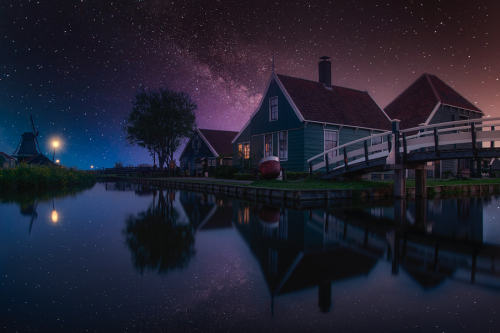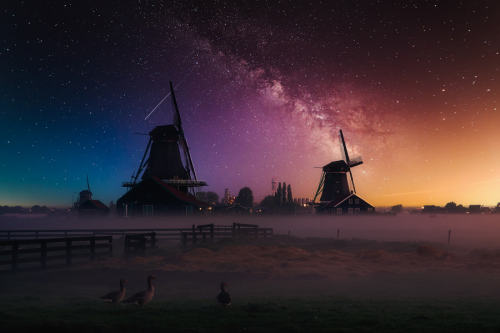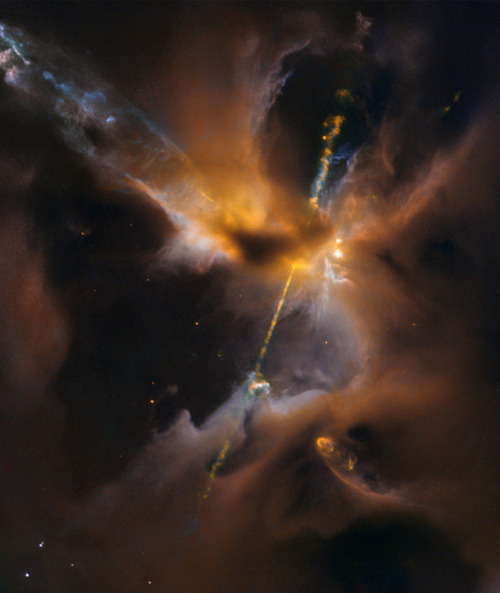#milky way
“You’re capable of such beautiful dreams, and such horrible nightmares. You feel so lost, so cut off, so alone, only you’re not. See, in all our searching, the only thing we’ve found that makes the emptiness bearable, is each other.” - Carl Sagan,Contact
Post link
andromeda galaxy | flickr - photo sharing! on We Heart It. https://weheartit.com/entry/13834394/via/ohcalif0rnia
Post link

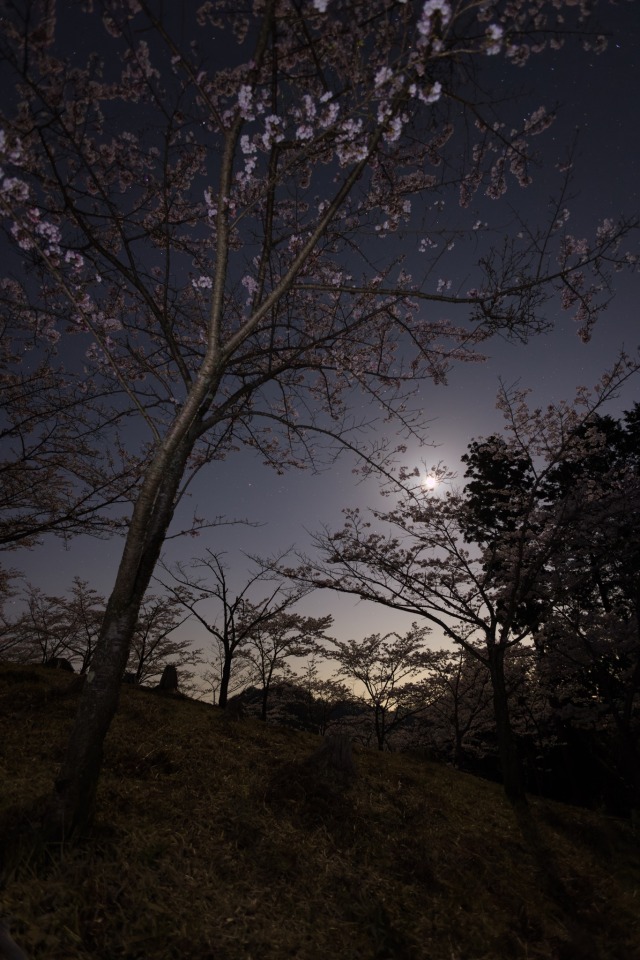



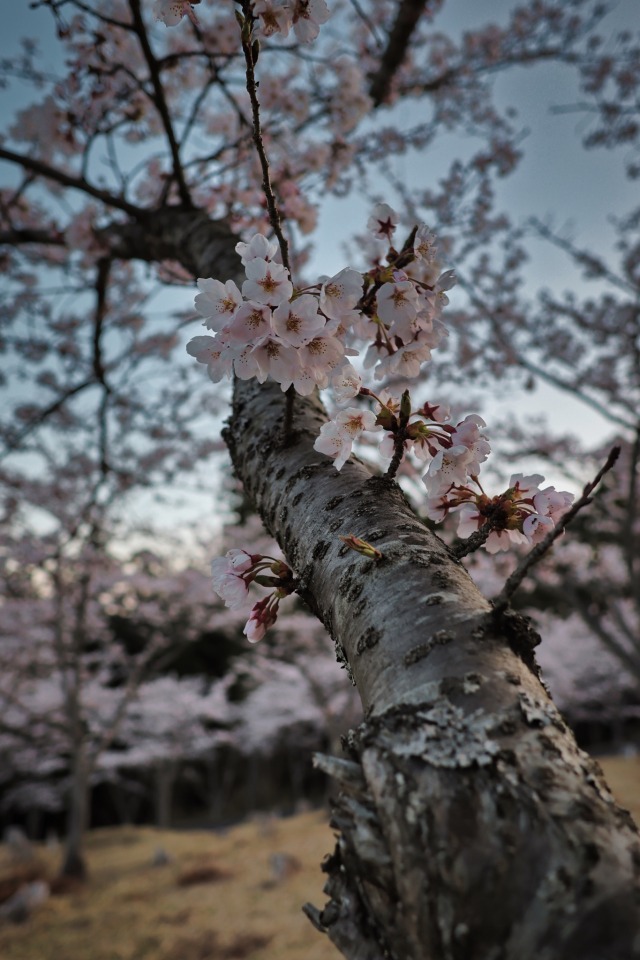

ぷらっと桜と星を撮りに行ってきました♪
この時期の天の川は昇るのが遅く、それまでの間暇だったので、いろいろと遊んでみました♪
星は、木々の間から見える天の川を日の出前に狙えました♪季節ものは、なにかとハードルが高い。それだけに撮れると嬉しいもんですね♪
綺麗な桜と星に癒されました♪










ぷらっと岐阜の旅
久しぶりの登山です♪
3000m級の山となれば空気も薄く、到着してそうそう頭痛となるが、アドレナリンが勝ち無事登頂となる。
山小屋に戻ると頭がガンガン。ロキソンを飲むと夕食時には調子が良くなっていて、すき焼きを美味しくいただけました。ビールのおかげでブースト増し増し♪
星狩りに出かけ、あまりの星の綺麗さにテンションアゲアゲMaxで撮ってきました。
次の日は下山し、森の中の目の前が川が流れる宿でゆっくり♪昼間からBBQとシャンパンで超絶贅沢な気分を味わえた♪その後は、ほろ酔い状態でお決まりの星狩り。三脚が杖代わりとなる。
観光もいろいろしてきたが、のせきれないので割愛しよう。旅はやっぱいい♪少しのトラブルも含めて全てが楽しい旅となりました♪



ナラワカでぷらっと星狩り
今年はゲンジとのコラボも撮れました♪
旬のものはとくにタイミングが難しいですね!
梅雨時期に晴れたのもほんと運が良かったです^_^


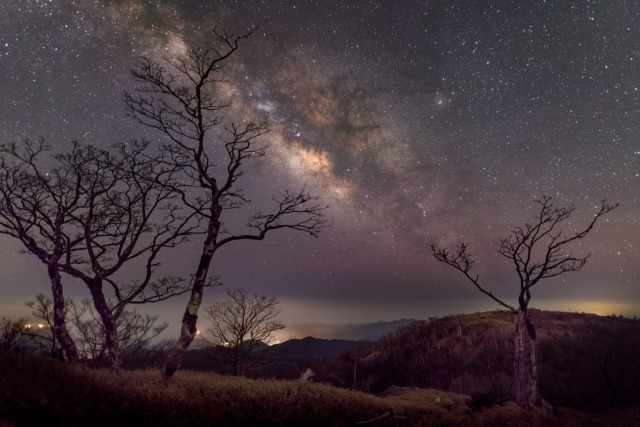

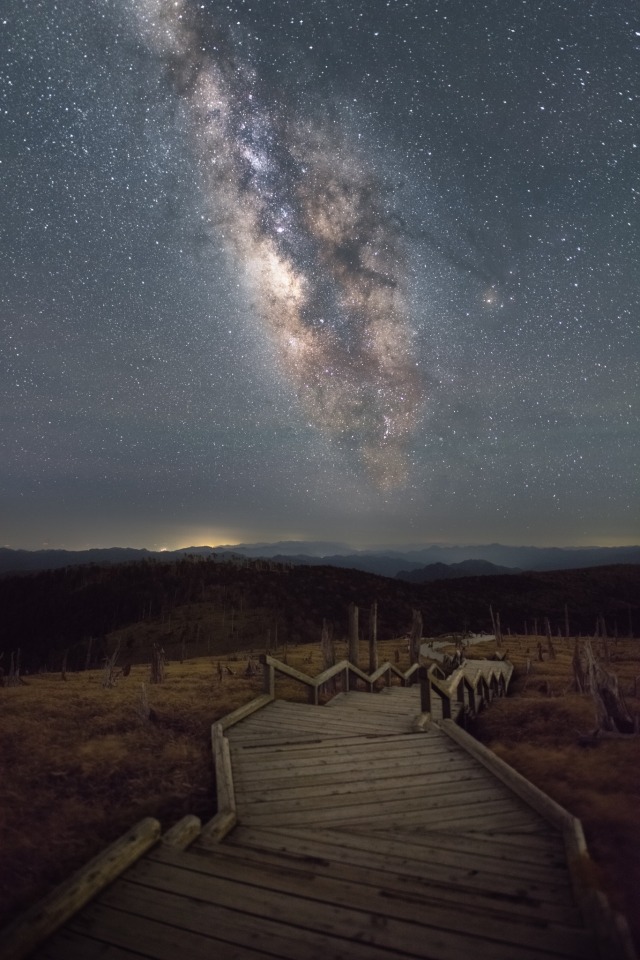





晴れたのでぷらっと奈良?三重?で星狩りをしてきました♪
快晴で星は綺麗に見えました♪
ただ気温一桁、強風のため体感温度は氷点下です。
なるべくカメラに風が当たらぬよう、全身で風を遮りながらの撮影。
夜は荒れましたが、爽やかな朝を迎えることができました♪朝陽の写真も添えときます^_^♪





ぷらっと奈良へ
星撮りナイトウォークからの早朝散歩♪
今年は桜と星のコラボは厳しいだろと思い梅にしてみましたが雲が多くて、みるみるうちに天の川は隠れちゃいました。
得意のチラネタリウム。少しは撮れてよかったと考えよう。
撮影 3月中旬
amazinglybeautifulphotography:
Milky Way over Limfjord, Denmark [1249x1600][OC] - Author: ruslan_merzlyakov on reddit
Post link

Similar in size to large, bright spiral galaxies in our neighborhood, IC 342 is a mere 10 million light-years distant in the northern constellation of Camelopardalis. It would be a prominent galaxy in our night sky, but it is hidden from clear view and only glimpsed through the veil of stars, gas and dust clouds along the plane of the Milky Way galaxy. Even though IC 342’s light is dimmed and reddened by intervening cosmic clouds, this sharp telescopic image shows the galaxy’s dust, young star clusters, and glowing pink star forming regions along spiral arms that wind far from the galaxy’s core. IC 342 may have undergone a recent burst of star formation activity and is close enough to have gravitationally influenced the evolution of the local group of galaxies and the Milky Way.
Image Credit & Copyright: Daniel Feller
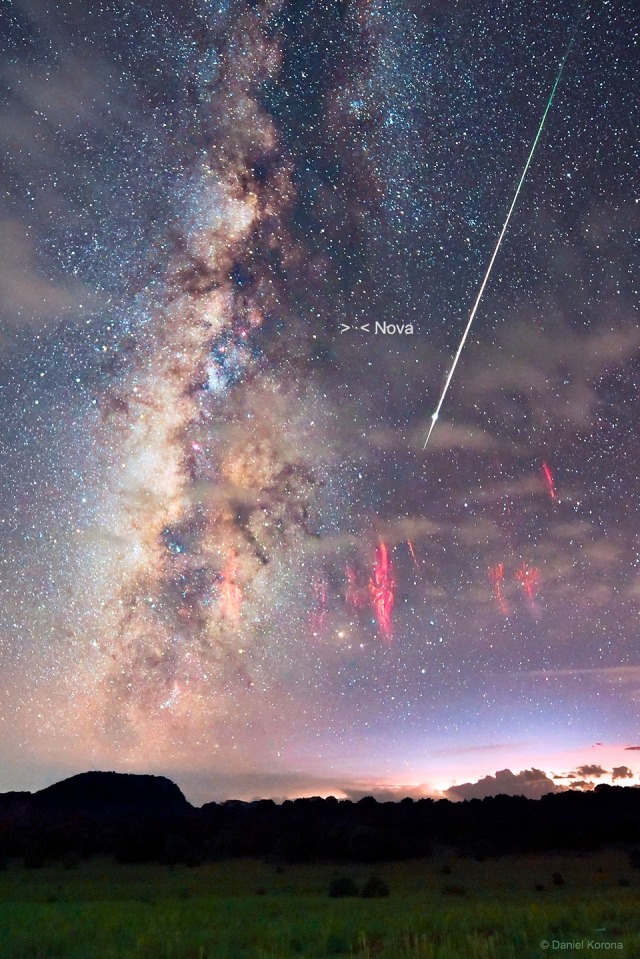
An amazing sky! The Milky Way Galaxy is visible along the left. If you’re near a dark sky, you can usually see part of our galaxy. There is also a bright meteor visible on the upper right, part of a very bright Perseid Meteor Shower from last week. Red sprites, a type of lightening visible on the lower right, also make an appearance in this image. Nova RS Ophiuchus discovered about a week ago, is visible just above the image center. Novas bright enough to be seen with the unaided eye occur every few years. It was such a special occurrence to capture all these things together, in a single night, on a single sky, above Zacatecas, Mexico.
Image Credit & Copyright: Daniel Korona

An enhanced Scorpius constellation!! If it looked this good to the unaided eye, we might might remember it better, typically appears as a few bright stars in a constellation. To get a spectacular image like this, though, you’d need a good camera, a dark sky, and some sophisticated image processing. The resulting digitally-enhanced image shows many breathtaking features. Diagonal across the right side of the image is part of the Milky Way Galaxy. Visible there are vast clouds of bright stars and long filaments of dust. Rising vertically on the left are dark dust bands known as the Dark River. Several of the bright stars on the left are part of Scorpius’ head and claws, and include the bright star Antares. Numerous red emission nebulas, blue reflection nebulas, and dark filaments are visible as well. Scorpius appears prominently in southern skies after sunset during the middle of the year.
Image Credit & Copyright: Stefan Lenz
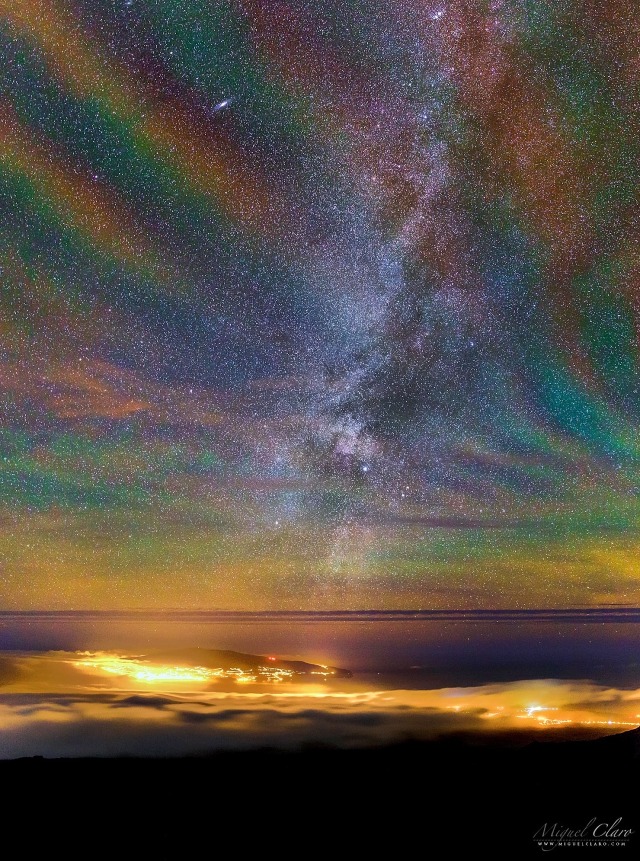
A rainbow airglow! Air glows all of the time, but it is usually hard to see. A disturbance, like a storm, may cause noticeable rippling in the Earth’s atmosphere. These gravity waves are oscillations in air, just like the ripples created when a rock is thrown in calm water. Makes sense right? But where do the colors come from? The deep red glow likely originates from OH molecules excited by ultraviolet light from the Sun. The orange and green airglow is likely caused by sodium and oxygen atoms slightly higher up. A spectacular sky is visible through this airglow, with the central band of our Milky Way Galaxy running up the image center, and M31, the Andromeda Galaxy, visible near the top left.
Image Credit & Copyright: Miguel Claro (TWAN); Rollover Annotation: Judy Schmidt

This insanely detailed scene of a portion of our universe has so many famous stars and nebulae in it! Let’s dive in!! Starting on the far upper left, toward the constellation of Auriga, is the picturesque Flaming Star Nebula (IC 405). Continuing down along the bright arc of our Milky Way Galaxy, from left to right crossing the constellations of the Twins and the Bull, notable appearing nebulas include the Tadpole, Simeis 147, Monkey Head, Jellyfish, Cone and Rosette nebulas. In the upper right quadrant of the image, toward the constellation of Orion, you can see Sh2-264, the half-circle of Barnard’s Loop, and the Horsehead and Orion nebulas. Famous stars in and around Orion include, from left to right, orange Betelgeuse (just right of the image center), blue Bellatrix (just above it), the Orion belt stars of Mintaka, Alnilam, and Alnitak, while bright Rigel appears on the far upper right. This region was captured on 34 separate images, taking over 430 hours of exposure, and digitally combined to reveal the featured image.
Image Credit & Copyright: Alistair Symon
Hubble Sees the Force Awakening in a Newborn Star
This celestial lightsaber does not lie in a galaxy far, far away, but rather inside our home galaxy, the Milky Way. It’s inside a turbulent birthing ground for new stars known as the Orion B molecular cloud complex, located 1,350 light-years away.
In the center of the image, partially obscured by a dark, Jedi-like cloak of dust, a newborn star shoots twin jets out into space as a sort of birth announcement to the universe
Credit:NASA / ESA
Post link



![Video [x] Video [x]](https://64.media.tumblr.com/339cf64ddeb2b0853e1d2486ec51d7f7/tumblr_o1jh8cnzV71tejz4lo1_500.gif)
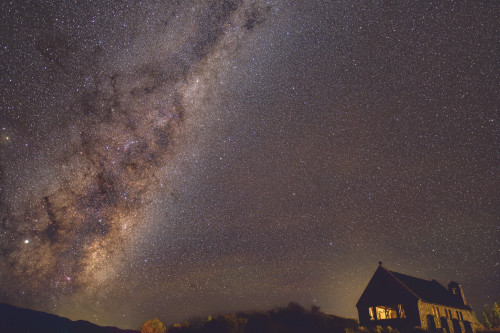


![amazinglybeautifulphotography:Milky Way over Limfjord, Denmark [1249x1600][OC] - Author: ruslan_merz amazinglybeautifulphotography:Milky Way over Limfjord, Denmark [1249x1600][OC] - Author: ruslan_merz](https://64.media.tumblr.com/b67c4d53f8cc72538d2de9fee0a780c6/ba2be5d63f02b087-93/s500x750/514aa6cd244fa2e35d5f9d93d51d8fec829df13d.jpg)
